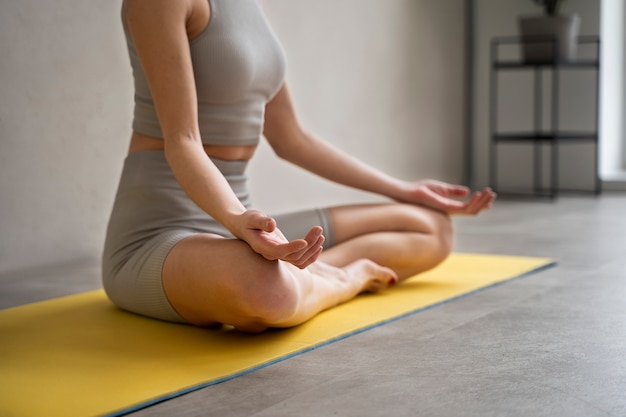
A yoga body isn’t just about flexible limbs; the ancient practice can improve memory, heart, and bone health, says Anna Magee.
We’ve become a nation hooked on yoga. Brits are now spending a whopping £790 million a year on yoga classes and gear. On one hand, yoga is branching out into some strange new trends like rage or naked yoga and even poses done on paddle-boards or horseback. On the other hand, science is backing up its real benefits more and more.
Researchers at UCLA discovered that a three-month yoga and meditation course was more effective than memory exercises in reducing age-related brain issues. Another study showed it improved sleep for breast cancer survivors.
Lucy Edge, 53, a former advertising executive, turned to yoga during a deep depression, choosing it over prescribed antidepressants. She took a six-month career break, went to India to learn yoga, and returned feeling happier and content. She’s written three books about yoga and started Yoga Meds, a section of Yogaclicks.com, listing over 300 clinical trials on yoga’s benefits, from arthritis to obesity.
Here’s how yoga could benefit your health and how to get started:
If crossword puzzles and Sudoku have been your go-to memory exercises, it might be time to try yoga. UCLA studies showed that adults over 55 who did 12 weeks of yoga and meditation had better improvements in memory, reduced depression and anxiety, and better stress resilience than those who only did memory exercises.
You don’t need to spend hours doing headstands to benefit. In the study, participants did one hour of Kundalini yoga per week, which includes gentle yoga, breathing techniques, meditation, and some chanting. They also practiced 20 minutes a day of Kirtan Kriya, a type of meditation involving chanting, hand movements, and visualizing light.
Yoga can also benefit your heart. There’s evidence suggesting yoga might reduce heart disease risk as much as conventional exercises, like brisk walking. Stress is a big contributor to heart disease, increasing blood pressure and heart rate, but yoga helps reduce stress.
Yoga can also help manage lower back pain. Sarah Shone, a physiotherapist and yoga teacher, integrated yoga into a back pain rehab program, with 87% of participants reporting less pain. The National Institute of Clinical Excellence (NICE) suggests yoga for lower back pain, and its benefits extend further.
Yoga also targets the pelvic floor muscles and can increase bone density since it’s weight-bearing. To start, it’s best to mention any health issues to your teacher and try gentler styles like Hatha or Iyengar yoga.
When choosing a yoga mat, think about where you’ll use it and if you need to carry it around. Taller individuals might need a longer mat, and those with knee or wrist pain should consider a thicker mat. The Valka Yoga Elephant Cork Mat, made from eco-friendly cork and rubber, is a great option. It’s durable, good for grip, and easy on the joints.
A yoga block can also be a useful prop. Valka Yoga offers a cork block that matches the mat, providing stability and grip for difficult poses.
Not flexible? No problem—yoga can still help:
– Try Yin or Restorative yoga for a slow, supportive practice.
– For an energetic class, try Vinyasa Flow, linking postures to breath.
– For precise alignment and poses supported by props, try Iyengar yoga.
– Anusara yoga offers alignment-focused flows set to music.
– Yoga Therapy is designed to help heal specific injuries or illnesses.
No matter your level, there’s a yoga style that can benefit you.